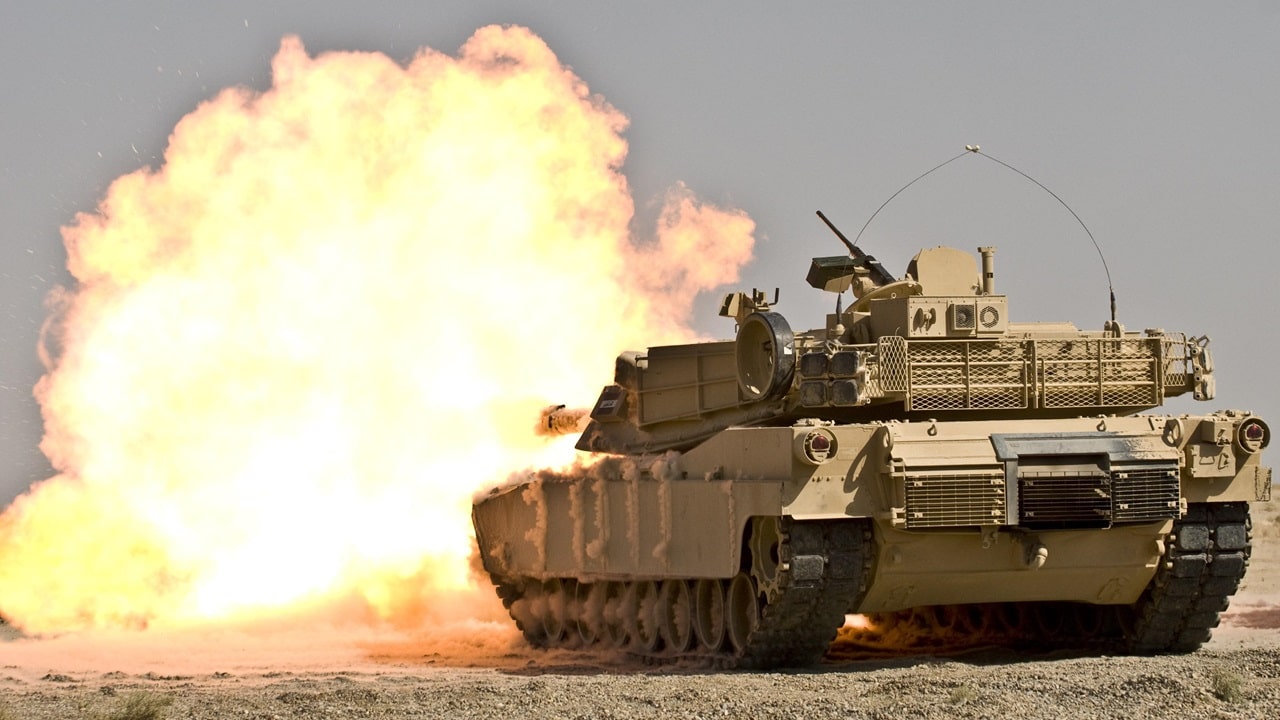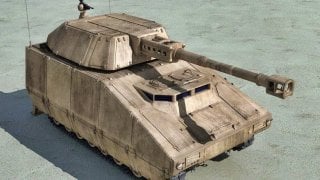XM1202: The Tank That Could Have Replaced the M1 Abrams
XM1202 was - at least in theory- a tank that could have replaced the legendary M1 Abrams tank. And yet, it never occurred.
The XM1202 Tank Never Drove Off the Drawing Board - A quick look at the calendar will remind everyone that it is literally just weeks away until the New Year. Time flies, and in the case of military planners, they're not thinking about 2024 – they're set on the 2030s and beyond as it will also literally take years to develop the next generation of platforms to replace the current systems now in service.
In August, the Army Science Board, a federally-sanctioned independent group of experts that advises the Secretary of the Army, published a report that warned that the U.S. Army's M1 Abrams main battle tank (MBT) will not be sufficient to support missions conducted from 20240 and beyond.
The study further called for one or more types of fifth-generation combat vehicles (5GCV) to effectively meet operational demands in the coming decades.
"Based on our findings, The M1 Abrams will not dominate the 2040 battlefield. All of the M1's advantages in mobility, firepower, and protection are at risk. The M1A2 SEP V3&4 upgrades will improve effectiveness but will not restore dominance. Near transparency in all domains will significantly increase the lethality our forces will experience. China and Russia have studied our forces and doctrine and are fielding countermeasures. We will continue to have to fight outnumbered, exacerbated by a low MBT operational readiness rate and an aging fleet," the report added.
Such future tanks could include a next-generation M1 derivative, along with lighter "tanks" that are armed with larger caliber guns or hypersonic anti-tank missiles, and even unmanned ground vehicles.
It could be noted too that the U.S. military has already been down this road – and in the late 1990s, the Manned Ground Vehicles (MGV) program was set in motion by then Army Chief of Staff Eric Shinseki. The MGV called for a family of lighter and more transportable ground vehicles developed by BAE Systems and General Dynamics as part of the U.S. Army's Future Combat Systems (FCS) program.
The FCS in the Crosshairs
According to a Congressional Research Service's report from November 2009, "FCS manned ground vehicles (MGVs) were a family of eight different combat vehicles—with some having more than one variation—based on a common platform and being designed to be air transportable by the U.S. Air Force. They were to be equipped with a variety of passive and active protection systems and sensors that the Army hoped would offer them the same survivability as the current heavy armor force. In addition, the Army intended for its MGVs to be highly reliable, require low maintenance, and have fuel-efficient engines."
The program saw progress, and in May 2000, the Defense Advanced Research Projects Agency (DARPA) awarded four contracts to four industry teams to develop the Future Combat Systems designs.
To reduce weight, the U.S. Army substituted armor with passive and active protection systems. The hope was that this could still provide a level of protection similar to the legacy armored vehicles being replaced
Enter the XM1202
Among the eight different combat vehicles was a replacement for the M1 Abrams. This included the Mounted Combat System (MCS) – the XM1202.
"As envisioned, the MCS was to provide direct and beyond-line-of-sight (BLOS) fires, was to be capable of providing direct fire support to dismounted infantry, and to attack targets with BLOS fires out to a range of 8 kilometers. The MCS was intended to replace to current M-1 Abrams tank. The MCS was to have had a crew of two and to be armed with a 120 mm main gun, a .50 caliber machine gun, and a 40 mm automatic grenade launcher," the CRS report further noted.
The MCS was also meant to defeat bunkers and breach walls during tactical assaults.
The Wrong Direction?
While the program progressed even after the United States found itself engaged in the Global War on Terror (GWoT) following the 9/11 attacks on the World Trade Center in New York City and the Pentagon, lessons learned in Afghanistan and Iraq put into question whether a lighter vehicle was the way to go.
The United States Department of Defense determined that the proposed FCS vehicle designs would be ineffective against IEDs (improvised explosive devices), and in April 2009, then-Secretary of Defense Robert Gates announced that he intended to significantly restructure the FCS program, and called for canceling the manned ground vehicle (MGV) component of the program entirely.
The U.S. Army shifted gears and opted to restart a new manned ground vehicle program – which was to be the Ground Combat Vehicle (GCV). The first variant of the GCV to be developed would have been an infantry fighting vehicle to replace the M2 Bradley. However, the GCV was also canceled in 2014.
Future of the M1 Abrams Tank – No SEPv4
As it stands, the M1 Abrams remains in service. However, in September, the U.S. Army announced it end its M1A2 System Enhancement Package version 4 program, and instead develop the M1E3 Abrams focused on challenges the tank is likely to face on the battlefield of 2040 and beyond.

The M1E3 is expected to reach initial operational capability in the early 2030s.
Author Experience and Expertise
Peter Suciu is a Michigan-based writer. He has contributed to more than four dozen magazines, newspapers, and websites with over 3,200 published pieces over a twenty-year career in journalism. He regularly writes about military hardware, firearms history, cybersecurity, politics, and international affairs. Peter is also a Contributing Writer for Forbes and Clearance Jobs. You can follow him on Twitter: @PeterSuciu.


